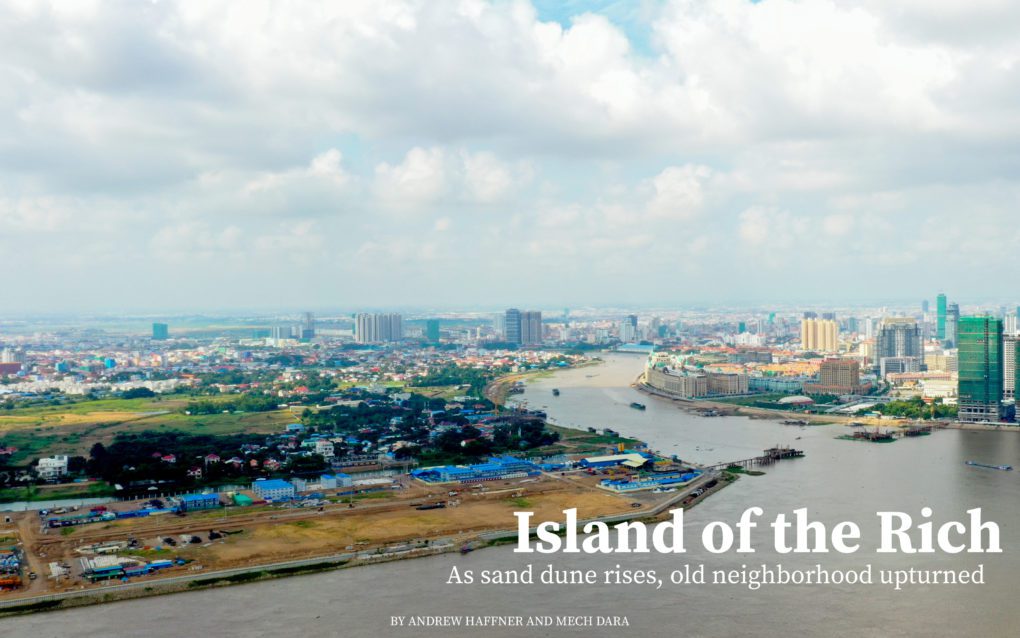
On the banks of the Mekong just off Koh Pich lies a shimmering vision of skyscrapers rising over the river.
For now, the image is limited to the promotional materials of the Vue Aston development, a project now making its way on the banks of the Bassac River. The glassy face of the mixed-use condominium, shown carefully scaled-down as a plastic model on its showroom floor, faces across the river at Koh Pich. More notably, however, it digs into the bank right next to the massive Koh Norea island-making project.
“In a few years, we could see the new island here like Koh Pich,” explained a sales representative, using a laser pointer to gesture at a wall map of the increasingly developed meeting-point of the Bassac and Mekong rivers. “We’re planning, long term, as being part of the city center.”
Vue Aston isn’t alone in that. The 125-hectare Koh Norea island project overseen by mega-developer Overseas Cambodia Investment Corporation — which is owned by influential tycoon Pung Khiev Se — is set to inject a reported $2.5 billion of investment to transform the confluence of the Mekong and Bassac rivers. Billed as a sequel of sorts to Koh Pich, which OCIC also developed as a large-scale expansion of a small natural island, the new island construction zone is the most visible landmark in what promises to be a transformation of the sleepy peninsula of Chbar Ampov district.
Land prices in the area have already spiked, with real estate firm CBRE reporting a rapid increase starting in 2018 for rates per square meter along nearby National Road 1. At least one major development connected to the family of Prime Minister Hun Sen, the $200 million-plus One Phnom Penh complex, is slated for construction along the new embankment.
Real estate boosters have cheered the Koh Norea project as a much-needed shot of investment, particularly with its connective infrastructure. OCIC is working with a Chinese company, Cana Sino Construction, to link its two islands with an 824-meter cable bridge at a cost of about $39.6 million. The Cambodian developer is also overseeing the construction of a second bridge to link the island to National Road 1, creating a new and, to builders, enticing access loop between Chbar Ampov and central Phnom Penh.
The view is different for some local residents, who told VOD the mega-project is ushering in a wave of gentrification through rising rents as property-owners look to capitalize on a newly hot real estate market.
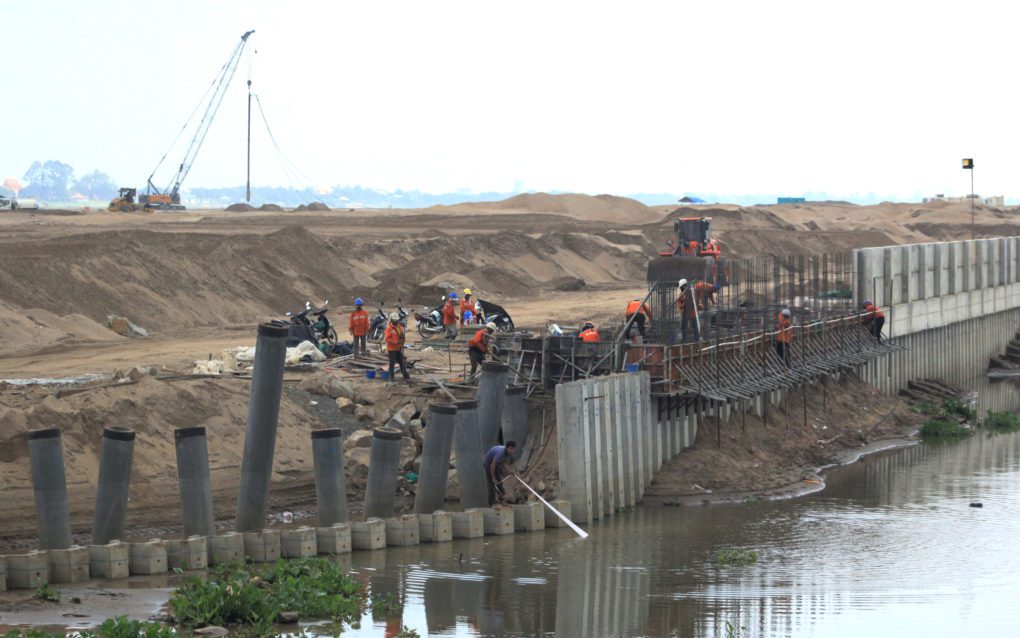
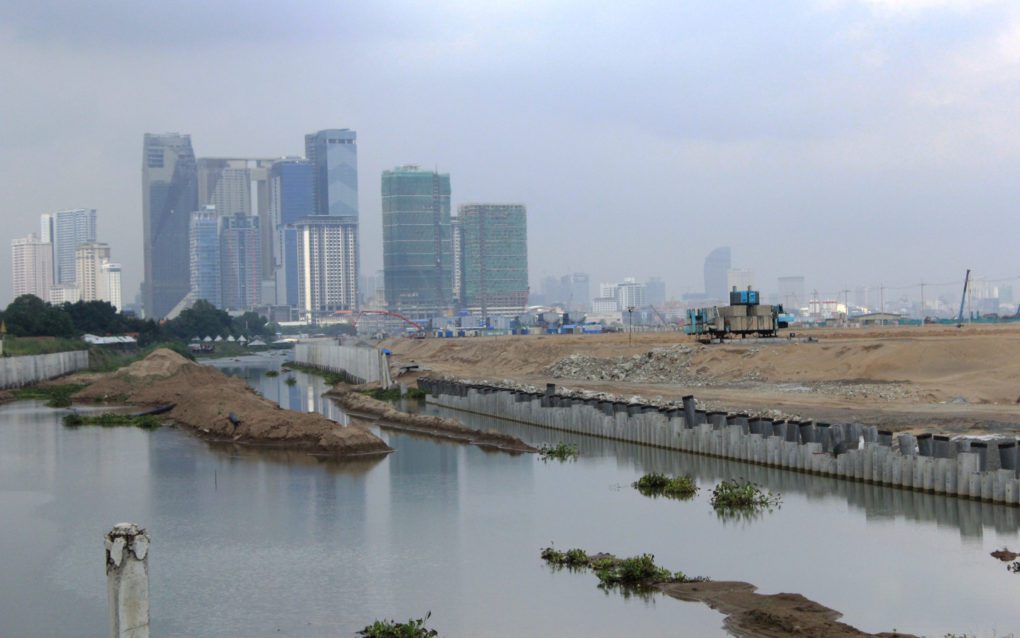
Those locals who spoke with VOD were largely resigned to whatever the project would bring, including a road expansion that would push about 2 meters into their current property lines. Some said they’d heard the family of Prime Minister Hun Sen was directly involved in developing the area, both on Koh Norea itself and also further inland, just off National Road 1.
One woman, who managed a small riverside restaurant, was mostly despondent when describing her experience with the development. Her business had depended on customers seeking river views and a natural setting to lounge over a meal in small wooden cabanas. Since the Covid-19 crisis began last year, her clientele fell off considerably. And when the filling replaced the river view with a heaping mound of sand, her sales shriveled further.
To make matters worse, her monthly rent on the riverside property had doubled in that time, rising to about $300 from $150.
“The rich are getting richer and the poor are getting poorer,” she said, her voice thick with emotion as she stood before a cabana in a state of disrepair.
She and other locals told VOD they’d received most of their information about the Koh Norea project at a meeting organized about two years ago by local officials.
The advance knowledge hadn’t made things easier for her. She said her family hadn’t been able to sleep while the heavy filling was going on, kept awake by the sound of heavy machinery. The company has left a canal open to make Koh Norea a true island, with the exception of a small land bridge at the development’s western-most tip on the Bassac River.
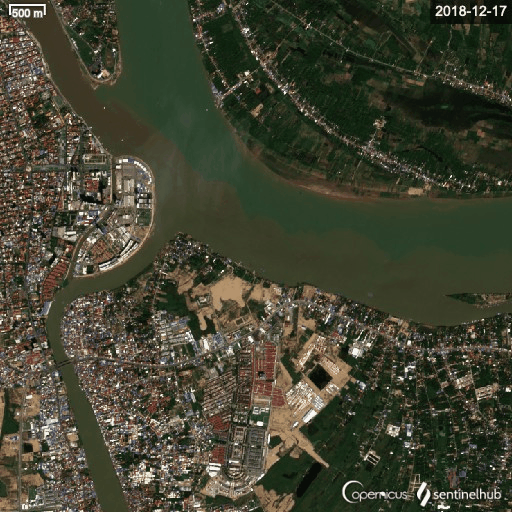
Her neighbor, a man named Kim Leng who sat wrapped in a krama on the front porch of his house, seemed to be taking the disruption a little more in stride.
“It would be good if they compensated us,” he said, musing on the prospect of the road expansion. “If they expanded by 2 meters, we might only have space for our beds.”
He’d heard the house next door had sold for more than $100,000, a respectable sum for the neighborhood, and he believed he might be able to get even more if he had to eventually sell his own house. The man said he’d lived in the area for about 30 years, and his wife had been born right across the street. In the time they’d been on Chbar Ampov, the area had changed considerably, in no small part due to erosion of the banks along the Mekong.
Leng said that, in his younger days, farmers had cultivated the alluvial soils of the riverside. But as land was increasingly lost to the river, many of these smallholders had been unable to invest the necessary capital to reinforce their embankments. The struggle against the current led many to sell their plots to wealthier Cambodians who could afford to handle the erosion.
Through that dynamic, the frontage, much of which is still dominated by sprawling, open-air restaurants modeled as family getaways, had already been million-dollar real-estate before the Koh Norea project started, according to the man. The prospect of a second Diamond Island had only lifted prices higher.
James Hodge, country director of real estate firm CBRE, said Chbar Ampov land prices further inland along the national road had last year hit an average upper-bound of $2,000 per square meter, up from $1,200 in 2018. That starting point is the same year OCIC was first granted government concessions to fill the river.
Hodge said there were some unrelated reasons for the price hike, including a general expansion of both commercial and development activity, the latter of which is anchored by major borey projects of the Peng Huot company. But the OCIC development was a catalyst on its own.
“The major change came after that infrastructure connection was announced,” Hodge said. “That’s expected to ease the access routes and create a more open route into the city center. It’s changed the area’s dynamics, or at least what people see as the possible dynamics, because the connection is looking much stronger, once the bridges are finished. It would be much easier to envisage high-rise development and more dense construction.”
Back on the porch, though Leng was hopeful he could sell his property if he needed to, he admitted he had no title to his property, not even a soft one. Though government officials had visited his home about a year ago to map it, a prerequisite for obtaining a title, that process has been inconclusive.
It didn’t make much difference to the man, though, who believed the local construction was ordered from the very top of Cambodian society.
“Anywhere the development comes, if you have [a soft title] or not, it’s all the same,” he said. “It’s the prime minister’s family, if they want to take everything, they can.”
Tep Promony, Niroth commune chief, confirmed to VOD that both sides of the road will be widened at some point to install sewage lines, but said some residents have not yet agreed to cede property for that.
Promony said the Koh Norea project as a whole shouldn’t have an effect on locals, and that residents should be able to get their land measured to provide clear borders for registration as part of simplifying the ongoing development.
“If there is an effect, it would be very little, and they can compromise with each other,” she said. “OCIC has been down to meet and discuss with people who live along the river.”
After taking initial those steps, OCIC drove its land reclamation ahead at full-steam through 2020 despite the upheaval of the Covid-19 pandemic. Today, the new island is a sprawling heap of fine, golden sand, dotted with temporary housing for its workers and all hemmed in by retaining walls driven into the riverbed.
The filling operation had previously been running almost around-the-clock for months, as barges heavy with sand pulled up to pumping stations to unload a slurry of material on the growing island. As of September 15, OCIC had reported to local media that filling would be finished by December. By this week, all but a small section appeared to be filled with sand.
A December 2020 post on the Cambodian Constructors Association webpage stated the project would require about 60 million cubic meters of land to complete.
When measured on a satellite map, the mass of Koh Norea is about 420 meters wide. As of early November, the infill had narrowed the main channel of the Mekong by about one-third at that point of the river, where it would otherwise measure roughly 1,330 meters across. The channel may in the future be narrowed even further due to filling on the opposing bank, where the tycoon Khun Sea is shoring up a natural floodplain for development of a separate satellite city project.
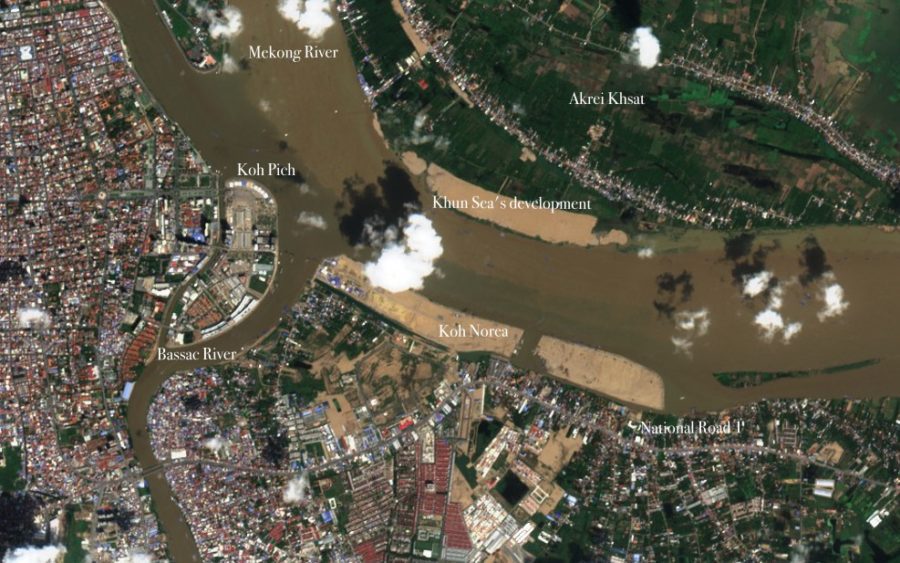
The filling of Koh Norea alone might increase the flowing speed of the river by as much as 20 percent, says hydrologist Meas Sothea, a scenario that could worsen the risk of flooding and bank erosion.
Sothea works with a consultancy called Green Enivro-Sult Cambodia (GESC), which in 2019 collaborated with the Ministry of Water Resources to perform a study of Mekong flow patterns to see how filling Koh Norea might change the river.
That study used a range of historical data to make a flow model that could estimate future water levels and flood risk due to the new construction. Sothea said the main priority of the research was to provide recommendations to build the new island with minimum impact on the Mekong and Bassac rivers.
GESC and its ministerial counterparts provided multiple suggestions for how that could be done, including leaving the canal unfilled to separate Koh Norea from Chbar Ampov, making it a true island. The consultancy also recommended OCIC use strategic dredging in the riverbed alongside the island in both rivers in order to deepen their channels and reduce the speed of flow. Maybe most significantly, GESC suggested the developer reinforce the opposing bank of both rivers for a stretch as long as about five kilometers in order to safeguard the most at-risk areas.
“If they follow what we have recommended in the study, I think they can maintain the flow normally and not cause much effect,” Sothea told VOD. “But if they don’t follow what we have found in the research, something could follow with bank erosion and the flow change in some areas, causing issues downstream of Koh Norea. And that’s what we are concerned about.”
He didn’t know whether OCIC had followed the recommendations and couldn’t comment on the status of the project today.
The developer didn’t respond to VOD requests for comment, and reporters didn’t see the kind of additional bank protections suggested by the consultants. The closest thing may be the filling on the opposite side of the Mekong by Khun Sea, who has been listed in the past as a business partner of Yim Leang, the son of deputy Prime Minister Yim Chhay Ly.
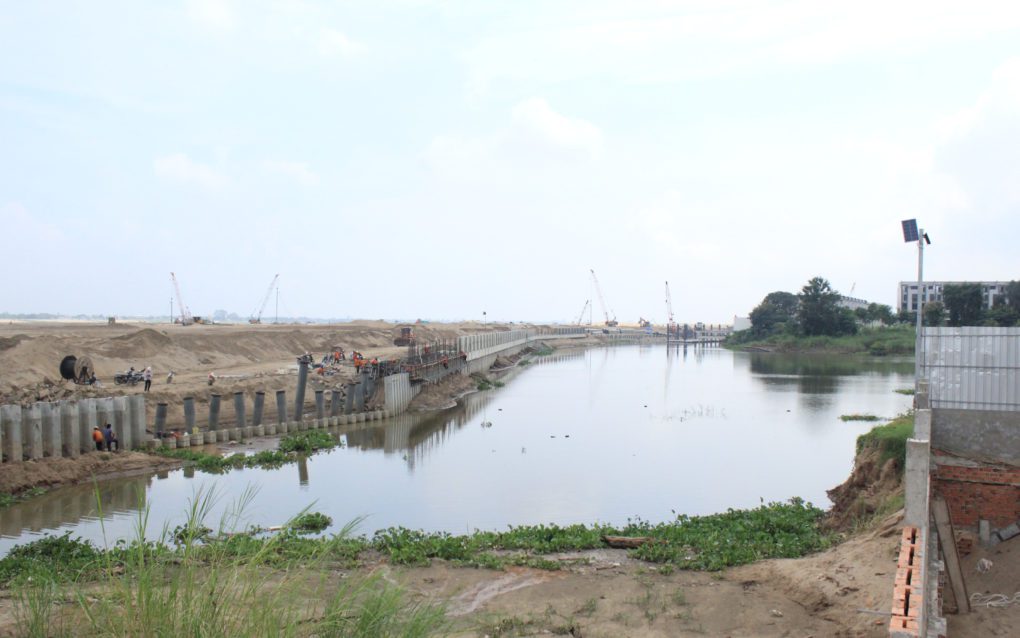
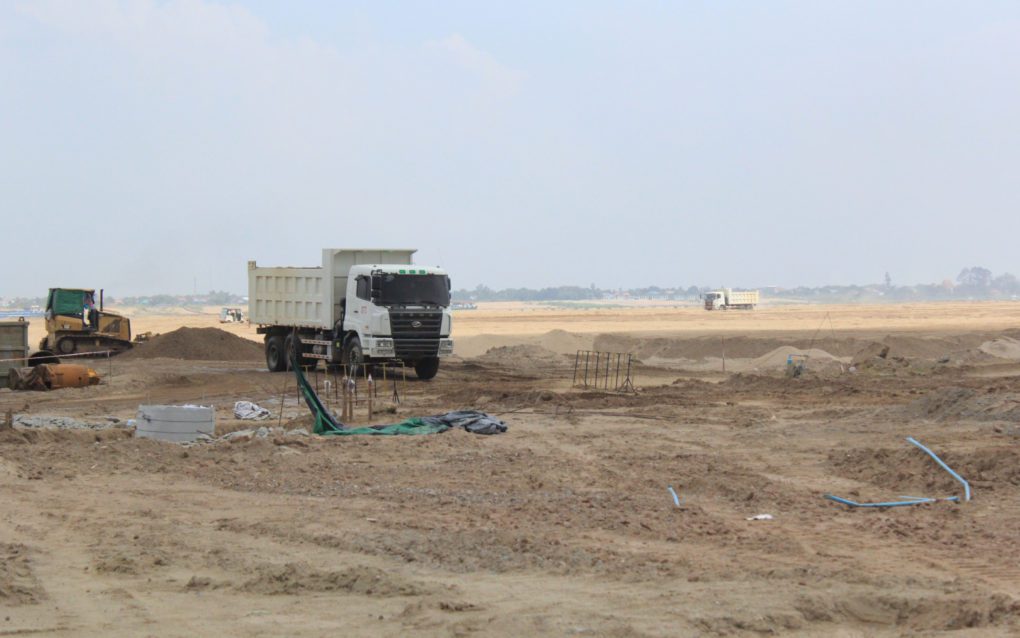
On the Koh Norea side of the river, another well-connected developer has staked a major claim along the spur that will one day connect the island to National Road 1. There, smooth stretches of new road cut neatly through a plot of riverfront land known as Boeng Snor, after the small lake that sits nearby. It’s mostly given over now to sand dunes and tall grass, its fresh roadways playing host to picnickers and young people kicking balls and fooling around on motorbikes.
The lot appears to be owned by the Cambodian office of the regional bank and developer B.I.C. Group, which is chaired by Yim Leak, another son of deputy Yim Chhay Ly and a brother-in-law to Hun Sen’s youngest son, Hun Many.
On its website, B.I.C. Group promises to develop the 61-hectare site for a mini-satellite city consisting of residential, commercial and parkway property known as One Phnom Penh. The firm held a groundbreaking ceremony in 2019 for the project, over which Yim Chhay Ly presided. On a page for B.I.C. Development, a subsidiary of the group, a master plan image of the site shows a phase of construction simply labeled “Yim Family Land.”
The new neighbors have, so far, not integrated well with the locals. Chbar Ampov has historically been home to a sizable community of Vietnamese Cambodians, many of whom attend the Church of the Sacred Heart of Jesus, a tidy blue and white building nearly directly across from where the new bridge is now being constructed.
On Thursday afternoon, a few men worked on a motorbike in a corner of the walled church courtyard given over to a small mechanic’s shop. A man who identified himself as Sovann sat in a plastic chair looking at his phone but spoke up when the subject of Koh Norea was raised.
“People around here, the ones who own the land, are happy,” he said of the project. “[But these are] rich people, newcomers.”
Many of the ethnic Vietnamese who live in the area are renters, Sovann said, and have been swept up in similar rent hikes as the female restaurateur on the riverfront. Those who are unable to pay higher rents have already been pushed out to seek cheaper options, and the number of parishioners at the church has dwindled as a result. Sovann thought the new environment of mass development had disrupted what he described as the “harmony” of the multi-ethnic area.
“This is 100 percent helping the rich,” he said. “It’s splitting the community.”
He’d previously lived on what is now Koh Pich, about 20 years ago. When OCIC began expanding that island, Sovann said developers had pushed the community there out more forcefully.
Today, he added, that’s not the case. The real estate market can do that on its own.
“Before, you were forced to go,” Sovann said. “Now, you volunteer.”
Note: This report was produced with support from the Rosa Luxemburg Foundation under the financial support of the German Federal Ministry for Economic Cooperation and Development.












